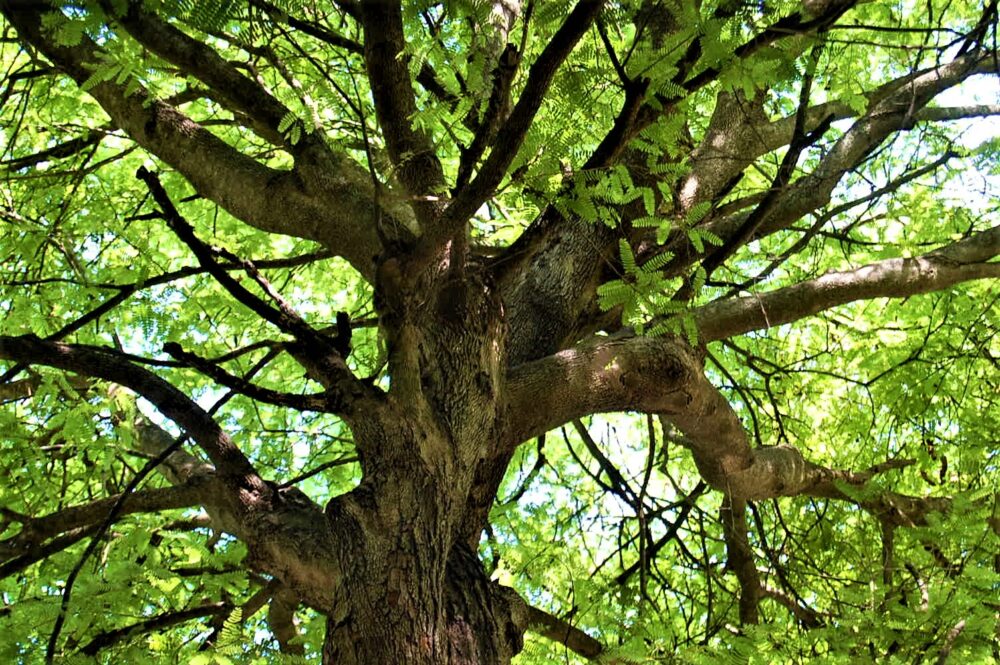Glass is an integral part of modern buildings, appreciated for its uniquely transparent nature that provides a literal window to the outside world. Made mostly of sand, sodium carbonate, and limestone, glass resists intense weather patterns and precipitation and is recyclable and relatively inexpensive to produce. However, glass has several weaknesses — it is thermally inefficient, releases excessive carbon dioxide during production, and shatters easily. Luckily, researchers are developing a valuable alternative: a type of transparent wood that looks just like glass but improves upon many of its flaws.
One major drawback of glass is that it readily allows heat to pass through due to its high thermal conductivity, which can drive up energy demands in the winter. To combat this, most modern windows have two panes with air in between acting as insulation, but they, too, are not immune from heat loss. Fourteen percent of primary energy consumption in the United States comes from regulating temperatures within buildings. The inefficiency of traditional glass in maintaining internal temperatures causes up to 25 percent of this energy to be lost. Because of its lower thermal conductivity, double-paned transparent wood is more thermally efficient than its glass counterpart, promising to lower energy costs for buildings it is installed in.
Glass has several weaknesses — it is thermally inefficient, releases excessive carbon dioxide during production, and shatters easily.
Additionally, traditional glass production releases huge amounts of carbon dioxide. In the U.S., up to 15 million metric tons are produced annually. It is widely known that excessive carbon emissions contribute to higher global temperatures; thus, traditional glass production has harmful climate consequences. Much of this carbon dioxide comes from the large amounts of energy needed to heat materials involved in glass production. The wood-based “glass” aims to solve this problem via production methods that don’t involve large-scale industrial heating and instead rely on natural solar power.
Moreover, glass is fragile and shatters upon impact, which makes it a dangerous building material. In contrast, this wood-based glass is more durable and able to withstand impacts since it capitalizes on the natural toughness of wood. When transparent wood does break, it bends or splinters rather than fully shattering — a notably safer effect. A study in Advanced Functional Materials showed transparent glass has a fracture toughness of 3.03 megajoules per cubic meter as compared to glass’s fracture toughness of only 0.003 megajoules per cubic meter.
So, how can wood possibly be made transparent? Researchers have achieved this by targeting lignin, the primary component of wood that absorbs light and produces its characteristic brown color. An approach presented in a 2020 study in Advanced Functional Materials involves soaking balsa wood in a sodium chlorite bath to entirely remove lignin and then adding a polymer filler to improve transparency and durability. While this process produces a promising result, this method uses large amounts of chemicals and energy and ultimately produces toxic liquid waste.
A newer strategy published in Science Advances modifies lignin instead of eliminating it, focusing on the light-absorbing part of lignin known as the chromophore. This method still requires chemicals, but they are brushed onto the wood instead of being added to chemical baths. Thus, fewer chemicals are used, which produces less toxic waste and makes production less expensive. Next, solar power is used as a source of ultraviolet light which completes the process of removing chromophores from lignin. Relying on solar power reduces the energy demand for heat involved in the production, a significant improvement over traditional glass. Finally, epoxy is added to the wood to complete its transparent transformation.
Attempting to reinvent glass has been a challenging task, forcing engineers to balance optical, thermal, and mechanical properties.
The kinds of transparent wood currently being developed have excellent optical properties, transmitting over 90 percent of visible light. The 2020 study boasts a final product that is five times more thermally efficient than regular glass, which means heat escapes less easily. Lastly, these types of transparent wood demonstrate high tensile strength and durability.
Attempting to reinvent glass has been a challenging task, forcing engineers to balance optical, thermal, and mechanical properties while being mindful of environmental and economic concerns. As shown by the continuing research, scientists are still working to determine the most efficient production process for this new material. The goal is to make this a scalable process that can be cheaply and easily implemented so that transparent wood can become widely used in buildings instead of glass. When it comes to energy-efficient buildings, one thing is clear: transparent wood is a promising solution, combining the visual benefits of glass with the eco-friendliness and durability of wood, a renewable and versatile resource.
Sources:
Science Advances (2021). DOI: 10.1126/sciadv.abd7342
Advanced Functional Materials (2020). DOI: 10.1002/adfm.201907511
Image courtesy of Wikimedia Commons




